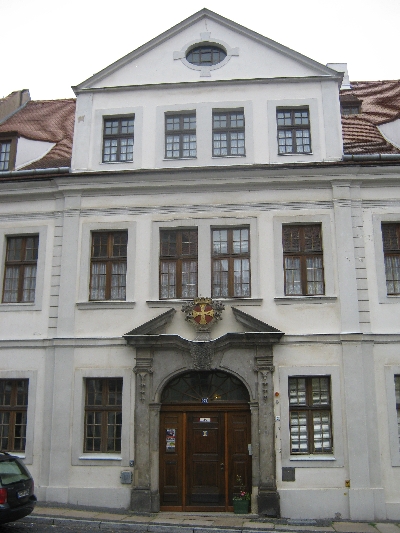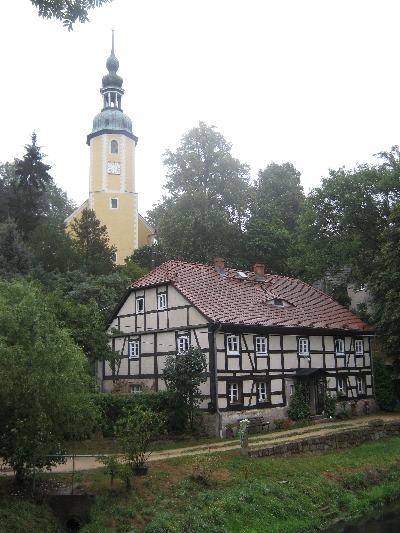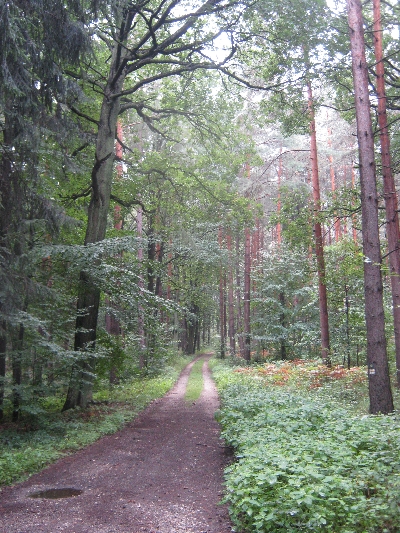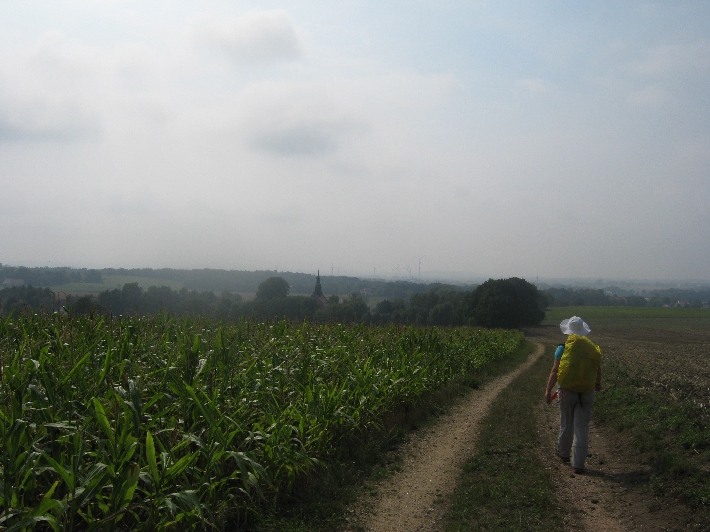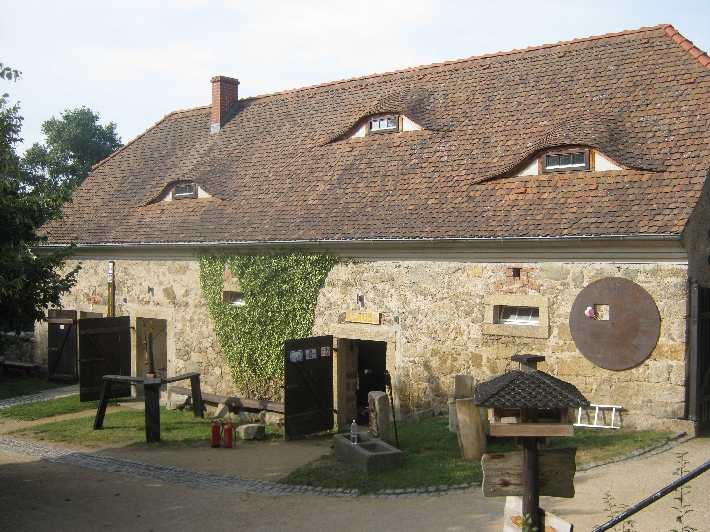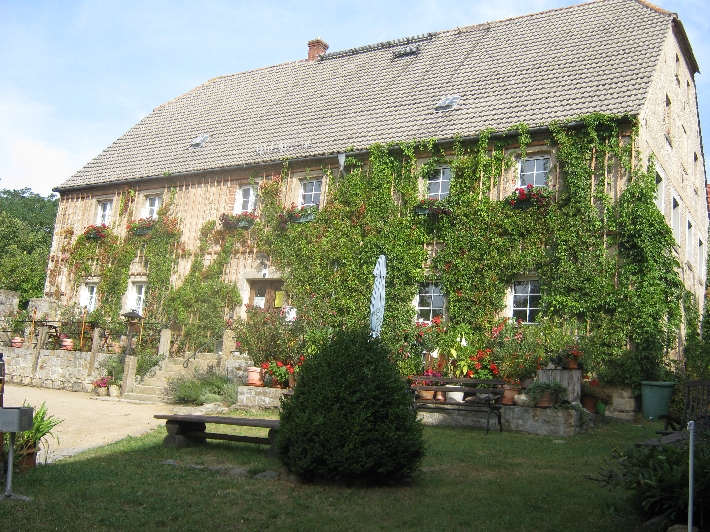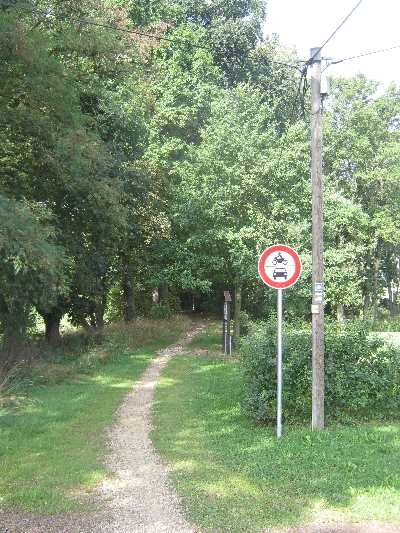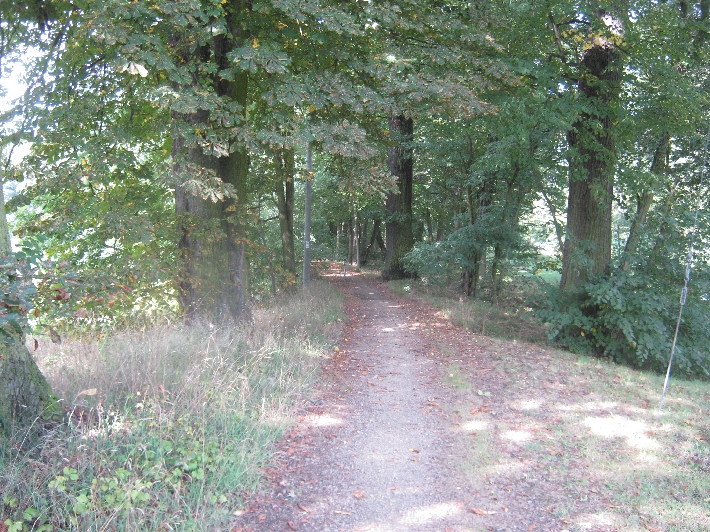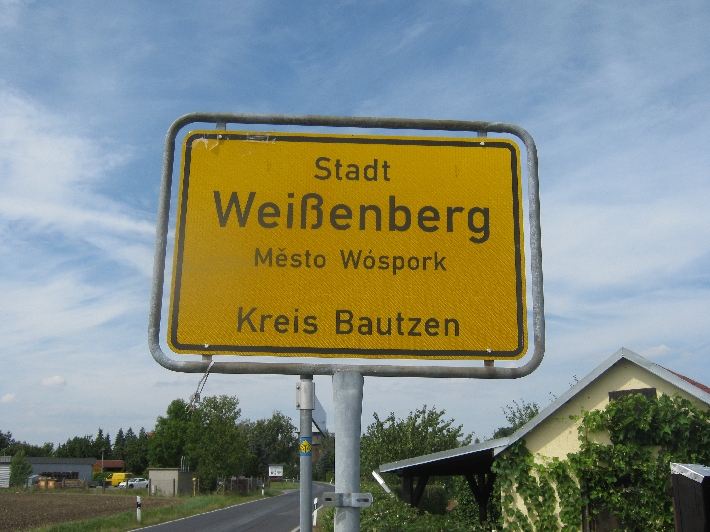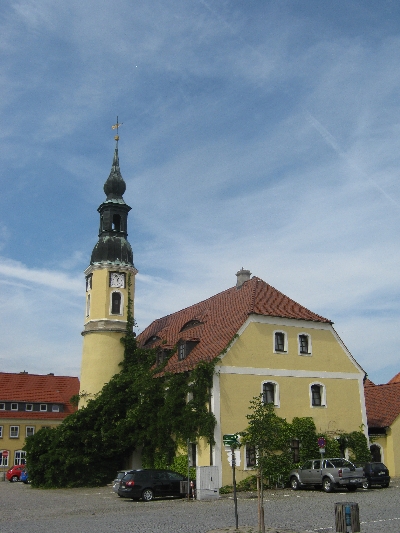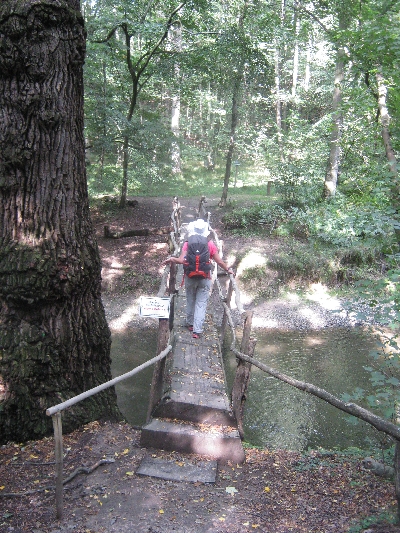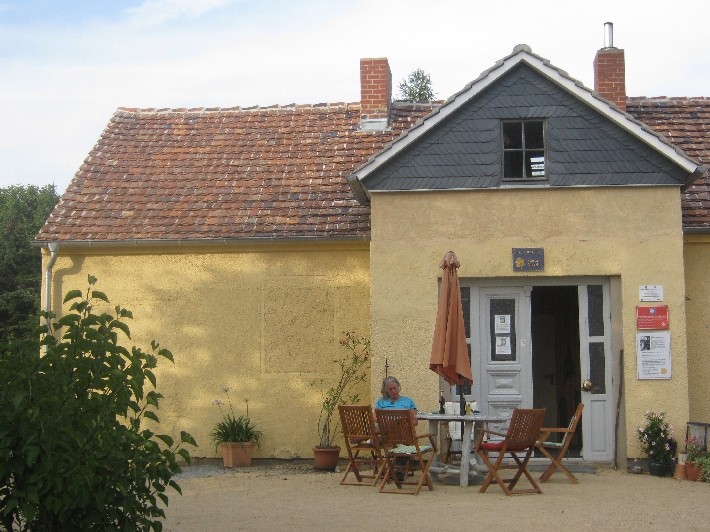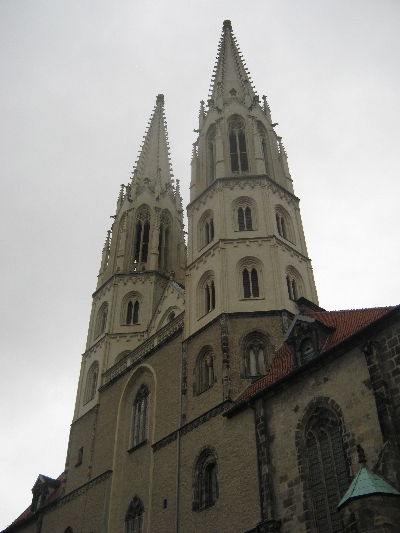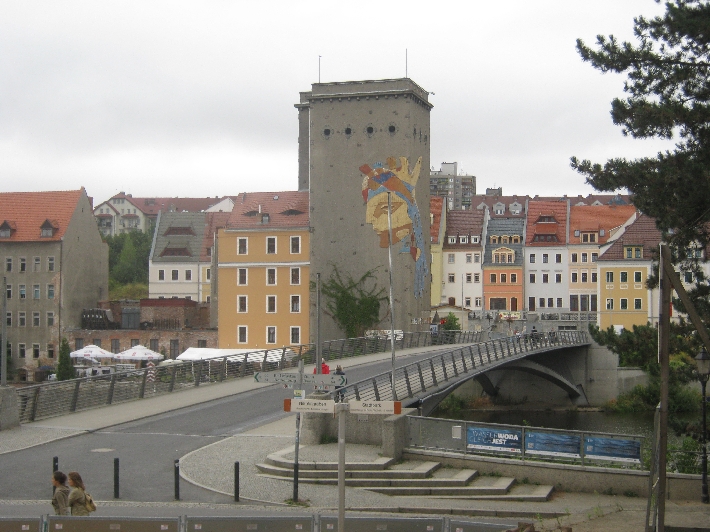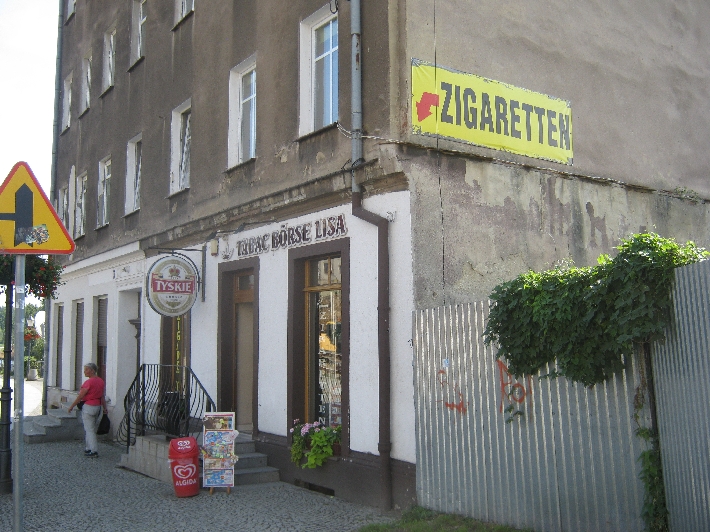On the morning of Friday 21st August 2015, Sybille and I set out from the Pilgerherberge at Gröditz, to walk 20km to the large town of Bautzen. As you can see from the photographs, we were blessed with fine sunny weather.
Our route took us along a series of tracks and minor roads across undulating countryside.

Here is the way approaching the village of Drehsa.

Within Drehsa, there was this fun mural of a flying pig and piglet 🙂

In view of the sunny weather, we both appreciated the shade provided by trees along parts of the route.
As on many pilgrim routes that I’ve walked, the approach to larger towns and cities is often not that pleasant for walkers. The last few kilometres into Bautzen involved walking uphill, alongside a busy main road. But we eventually made it, obtained the key to the pilgrim accommodation provided by the Lutheran Church, where we were able to shower, change and leave most of our belongings securely.

In the early evening, we enjoyed a drink, sitting outside in the main square, opposite the Rathaus.

Nearby is St. Peter’s Cathedral, an example of a simultaneum or Simultankirche. Here Lutherans and Roman Catholics have shared the same Church building since 1530! After exploring more of the historic town centre, Sybille took me a very nice Sorbian restaurant which she had discovered during her pilgrimage earlier in April.

Fortunately, the route out of Bautzen the following morning, was along a series of quite quiet roads, though we did have to pass under the busy Autobahn 4. After 8.5km of walking, we reached the top of Roter Berg, a low hill on which has been erected the Milleniumsdenkmal featuring St Cyril and St Methodius, Apostles to the Slavs. Methodius was made a bishop therefore he is the one wearing a mitre 🙂

That afternoon, we walked on a further 8.5km, to the town of Crostwitz. Just outside the town, the correct way was indicated by a yellow arrow, painted on the road!
 |
 |
In Crostwitz, we stayed overnight in this Pilgerherberge owned and run by a lady called Monika. She is a native speaker of Sorbian, the West Slavic language I mentioned in my previous post. In Crostwitz, the secondary/high school, teaches through the medium of Sorbian, with German only being taught as a second language.
Monika explained that when this area was part of the Soviet satellite state of East Germany, the communist authorities actively encouraged the use and preservation of the Sorbian language. This was because of it being a Slavic language and so much of what happened was orchestrated by the Russians in Moscow, their ‘fellow Slavs’ 😉 It is ironic that now, one place where the language continues in active use, is within the Church. On the evening of Saturday 22nd August 2015, Sybille and I went to a very well-attended mass in the Roman Catholic Parish Church, conducted only in Sorbian.

Believe it or not, despite only being spoken by about 50,000 people, there are two different versions of Sorbian! About 40,000 people speak Upper Sorbian and live in the Bundesland of Freistaat Sachsen, the area we were walking through. Immediately north, in the Bundesland of Brandenburg, there are a further 10,000 speakers of Lower Sorbian. Upper Sorbian relates more to Czech; Lower Sorbian to Polish.
Our final day on this first part of the Ökumenische Pilgerweg was Sunday 23rd August 2015, when we walked 16.5km from Crostwitz to Kamenz. Once more it was fine and sunny and my main recollection of that day, was finding nowhere that was open to serve us a cool drink! Fortunately, when we reached the eastern outskirts of Kamenz, we had to walk right through where a travelling fair was set up for a week and we finally were able to purchase a couple of beers.
 |
 |
We then walked on to the town centre to the tourist information centre, where we collected the key to the Pilgerherberge. Following that, we treated ourselves to a further beer, sitting outside a hotel on the town square, opposite the Rathaus. One problem we encountered throughout our week on the Ökumenische Pilgerweg, were an abundance of wasps, who tended to take a great interest in any beer we were drinking. This was a novel way of preventing them doing so 🙂
My other recollection of the whole week was the almost total absence of anyone who spoke English. My normal experience of trying to use my limited German when in Germany, is being spoken back to in word-perfect English! But the first time this happened to me during our five days on the Ökumenische Pilgerweg, was in Kamenz, ordering this beer and a different one for Sybille, who had gone off to use the toilet facilities in the hotel. I presume the reason for the lack of English was being in the former East Germany and being places not normally frequented that much by non-German tourists.

Suitably refreshed, we then walked on a further kilometre uphill 🙁 , to the Kamenz Pilgerherberge.
 |
 |

